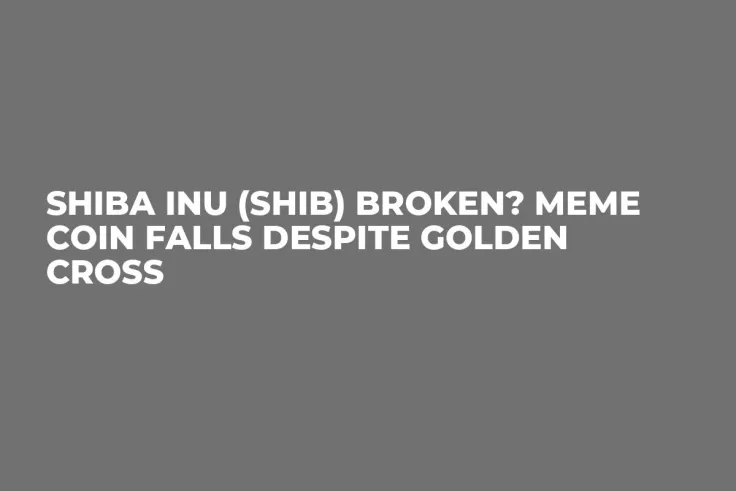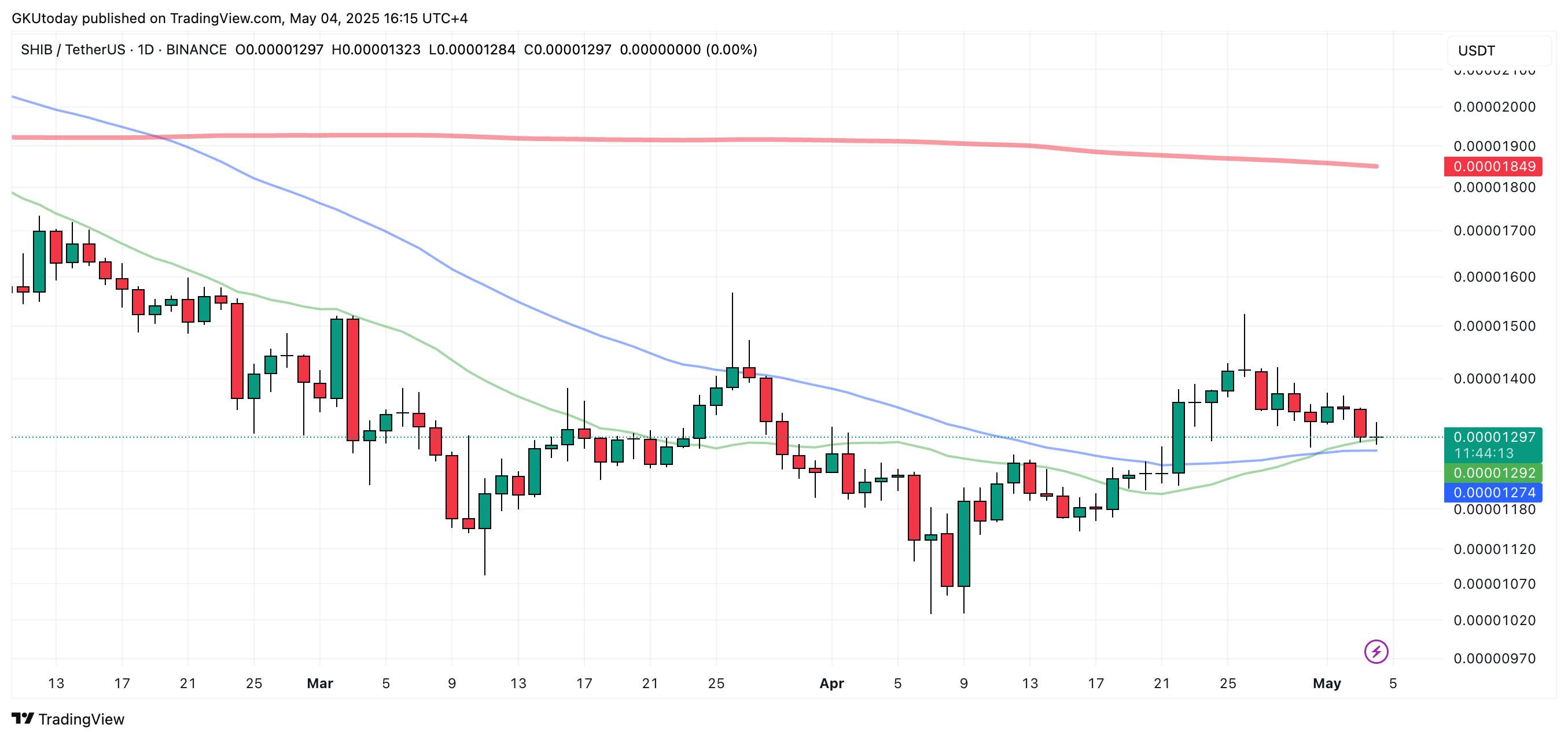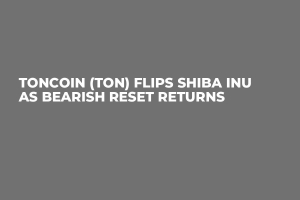
Disclaimer: The opinions expressed by our writers are their own and do not represent the views of U.Today. The financial and market information provided on U.Today is intended for informational purposes only. U.Today is not liable for any financial losses incurred while trading cryptocurrencies. Conduct your own research by contacting financial experts before making any investment decisions. We believe that all content is accurate as of the date of publication, but certain offers mentioned may no longer be available.
Shiba Inu (SHIB) is facing a new wave of pressure despite the recent emergence of a traditionally bullish technical indicator. The token has dropped even though a golden cross — a pattern often linked to upward momentum — formed on the daily chart recently.
A golden cross happens when a short-term moving average goes above a longer-term moving average. In SHIB's case, the 23-day moving average has crossed the 200-day, which suggests the potential for a bullish trend reversal. But so far, the price action has not shown the expected result.
Right now, SHIB is trading near $0.00001296, down over 5% in recent sessions. The decline comes after a short rise that saw the token reach highs around $0.000014 before hitting a resistance point and dropping.
SHIB is not able to hold gains above the crossover zone, which is making traders worry that the golden cross might be sending out a false signal because of the overall uncertainty in the market.

Technical support is sitting right around $0.00001274, which is in line with the 23-day moving average. If it doesn't hold above this level, it could lead to more selling, with the next support level being around $0.00001107. The price is still holding steady at around $0.00001360, which is the lowest it has been in a while.
The overall situation with meme coins is still a bit uncertain, with market participants keeping a close eye on things like trading volume, trend validation and the overall risk appetite across digital assets.
Golden crosses are usually seen as a good sign for the market, but they can actually be less important when investors are feeling uncertain or when there are a lot of short-term bets being made.


 Dan Burgin
Dan Burgin Vladislav Sopov
Vladislav Sopov U.Today Editorial Team
U.Today Editorial Team